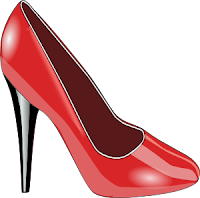Cumbia -- Folkloric
 Monument to Cumbia in El Banco, Magdalena, Colombia
Monument to Cumbia in El Banco, Magdalena, ColombiaCUMBIA is yet another purely Colombian musical invention. Many people are familiar with modern cumbia. Fewer are familiar with the classic folkloric Cumbia, from which modern Cumbia is derived.
The classic cumbia is played using the gaita hembra, gaita macho, the maraca, and drums. Classic cumbia is a Zambo (Indigenous and African mix) invention. In fact the word Cumbia comes from the African word Cumbe which meant Fiesta or Party.
Cumbia can trace its start to the beginning of the 1800s -- about the time of Bolivar. The city of El Banco, Magdalena, considers itself the birthplace of Cumbia, but Barranquilla made it famous.
The Cumbia is based on a 2/2 or 2/4 time signature. Initially, the cumbia was purely instrumental. But, over time lyrics were added.
In the traditional cumbia dance, the women wear long flowing skirts or dresses. The blouse has 3/4 sleeves and the bodice is tightly fit to the waist. The cloth is usually cotton with floral or gingham checked pattern. They wear necklaces, flowers, and special shoes called babuchas -- worn without socks.
Men wear white pants with a round-neck white shirt. The always carry a bag, a handkerchief, and a hat. Many also carry machetes, ropes, candles and other props.
Cumbia Colombiana is a national symbol. Even Shakira features it in her video -- Hips Don't Lie.
Here is a short clip showing traditional Cumbia.
http://www.youtube.com/watch?v=8KHCQBXoRwE&feature=related
Today, the most recognized song is the "Pollera Colora". It was one of the 20 most beautiful songs of Colombia. My husband says, "When any Colombian in the world hears that song, there will be some sort of reaction."
Listen to it here:
http://www.youtube.com/watch?v=5y3lmS0L-co&feature=related
Also, if you can read Spanish, the following book is available through Interlibrary loan.
Kumbia, legado cultural de los indígenas del Caribe colombiano, by Gerardo Pombo Hernandez.
Photo:
http://upload.wikimedia.org/wikipedia/commons/d/dd/Monumento_a_la_cumbia.JPG
Kumbia, legado cultural de los indígenas del Caribe colombiano, by Gerardo Pombo Hernandez.
Photo:
http://upload.wikimedia.org/wikipedia/commons/d/dd/Monumento_a_la_cumbia.JPG

Comments